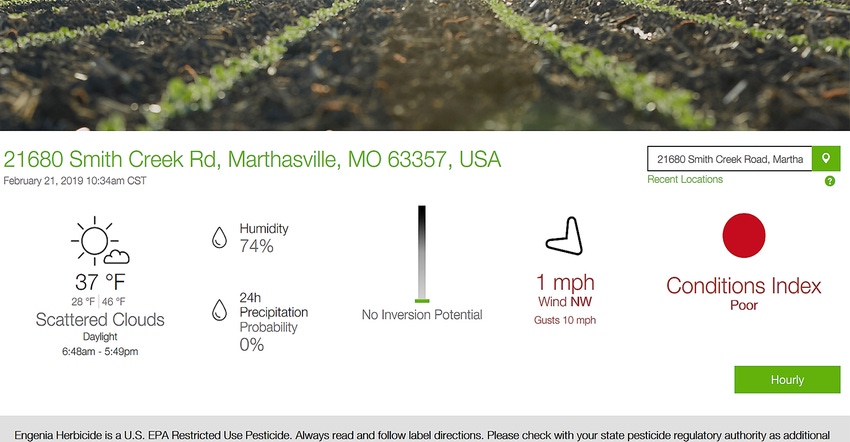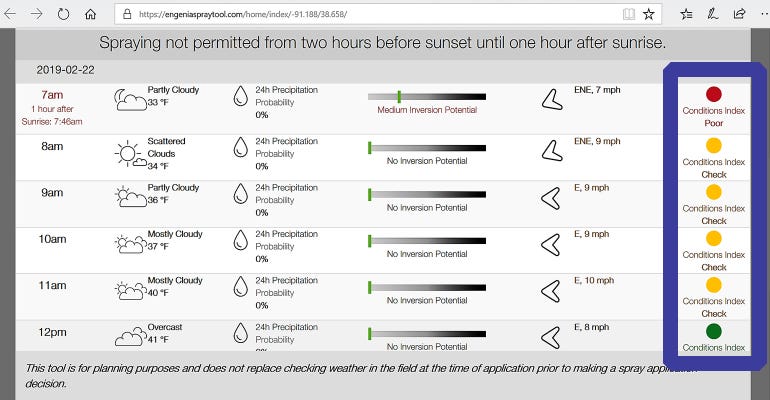
You can make a plan to spray dicamba on fields this summer.
An online tool from BASF provides farmers and applicators with a green light on when to spray products such as Engenia in 2019. BASF technical marketing director Chad Asthmus says farmers can use the Engenia Spray Tool to determine the best time of day for application within a 36-hour window into the future.
Here is how it works:
Step 1: You must visit Engeniaspraytool.com. This is a web-only application. Once there, the site will try to latch on to your geolocation. If it cannot find you, farmers can enter their field location either by zip code, town and state name, or exact address in the search box on the right. Then press enter.
Step 2: View local information. A new page will pull up with a data set tailored for your location. Farmers can review current conditions such as temperature, humidity index and the day’s precipitation probability, which is common on most weather apps. However, the Engenia Spray Tool offers more with an inversion potential, wind speed and a conditions index. All of this is in an easy-to-read format. Pay close attention to the inversion potential and conditions index.
Step 3: Look for colors. A quick check of the round circle on the page will let you know if it is good to spray. Just like a stoplight, green means go, red means stop, yellow is a warning to check before you spray. These are all displayed for your location on the main page. But this information is only for that day. For planning purposes there is another screen.

QUICK GUIDE: Pay attention to the round circles on this spray tool. It offers a visual cue on when is the right time to spray dicamba-based products such as Engenia.

Step 4: Check out the hourly button. If you are looking for ideal spray times for 36 hours into the future, click on the green hourly button below the conditions index circle on your location page. The next page will pull up conditions of temperature, precipitation, inversion potential, wind speed and direction and conditions index by the hour. The inversion potential provides a sliding scale to see the probability of an inversion along with a description of “no,” “medium,” or “high” inversion potential.
Step 5: Make your decision. By assessing all the information, you can determine the best time to spray. Those red, green or yellow dots offer a quick gut check. When you see red, stop and assess. And since the weather varies, check the website one last time to make sure those spray conditions have not changed before you head to the field.
About the Author(s)
You May Also Like






